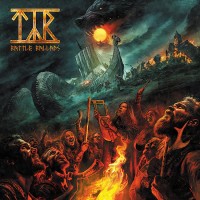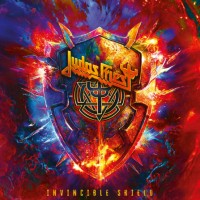Mordor - Biography
This band's profile is 'invisible', meaning that it's much less prominent on the site - either because it's incomplete, or maybe doesn't entirely fit MS format.
Biography
Formed in Switzerland from the ashes of the blackcore group Arög by Scorh Anyroth and Dam Gomhory in 1990, Mordor was an endeavor to explore some gloomy territories, a terra incognita, that only few bands did it. At the beginning, Mordor started by playing a dark minimalist ambient doomy music. They continued in merging it with black death doom primal metal and industrial bombastic experimental music, but always with the same leading and characteristic slow tempo. Based upon different myths and archetypes as well as ancient gnosis, the work of Mordor was not only musical but really a quest beyond the usual view of the world and of man.
In November 1990, as a result of an intense experience, the very first recording "Odes" was produced, a 56-minute length release made of three pieces. Using repetitive and minimalist beats, black death vocals with only few words, lo-fi synthesizer, ambient guitar sound and a dark and threatening tempo, it clearly appeared the purpose was not to make music but to create an atmosphere useful for traveling in other worlds. The song named "Dark Throne Of Blasphemous Evil" influenced by the lovecraftian mythology was even considered by some people as one of the foundation stone of the funeral doom.
In 1991, Mordor released "Black Roses From The Dawn Of Chaos", a 11-minute length song still using the same pattern than "Odes" but in a different mood. This piece stood on a compilation with some pieces of Arög and G.O.R.A., an extremist project based on grind, noise and industrial sounds.
In 1992, with "Csejthe", another path was followed to express blackness: the black doom basis has merged with the epic industrial sound of bands like Laibach and Foetus, and the spirit of some gothic bands. In spite of being recorded as a demo, this innovative release received some interest, and in April 1992, the Californian label Wild Rags Records produced a retrospective including "Csejthe", two pieces of "Odes" and "Black Roses From The Dawn Of Chaos".
In collaboration with Swiss project Art'Sneider, the compilation "The Way of Nihilism" was made in early 1993. Exploring trough sound different definitions of nihilism, this release was very soon sold-out and considered by some people like a "peak in the dark post-modern art". Apart a new Mordor' song named "In Search Of The Pure Negation", this compilation included several project bands like G.O.R.A., Odessa, Vorsaken, Cult of Noise, all linked with Mordor.
Later Mordor recorded "Two Castles in Black", back in the "Odes" vein, which was used for the compilation "And Forget...", issued by the French association Incense in October 1993.
For the Netherlander label Shivadarshana Records a picture 7" was conceived with two new songs, "Les Armées de Sauron" and "Dark is the Future". Both songs aimed to go farther than "Csejthe" in the merging of black doom metal and barbaric classical music, and with a better production. The 7" was finally released with some delay at the end of 1994.
In April 1994, for the compilation "Particules" released by Incense, a song named "Mahârâtrî" and close to the abyssal spirit of "Odes" was recorded, inspired by the black Hindu goddess Kâlî.
Due to the interest of Wild Rags Records, "Odes" and "Csejthe" were remixed to be reissued on CD format. "Odes" CD included the three original songs and "Black Roses From The Dawn Of Chaos", whereas "In Search Of The Pure Negation" and a new song "Agony : The Ascent of the Mountain" were added as bonus tracks to "Csejthe" CD. Both were available in the middle of 1995.
In Mars 1995, Mordor did its first live act in Limoges in France, after the performances of Trom and Proton Burst. The ambient introduction piece of Mordor, "Prélude", was later used for "Germ", another compilation tape released by Incense. This live act was very controversial by some ignorant French media.
During the year 1995-1996, Mordor still forged an alloy made of black doom metal and heavy industrial grandiloquent music and worked on a third album, "Amors", which was never finished. The main part of this album was a 20-minute length song called "Domnisoara Christina" after the novel of the Rumanian author Mircea Eliade. Only a temporary mix on analog tape survived of recording sessions.
In spite of that, Mordor worked on a new live act for the holy time of Samain, the ancient Celtic Irish fest, in Neuchâtel in Switzerland, on November the 1st 1997. After Proton Burst performance, Mordor in an extended line-up of six members played some old tracks as well as new material.
In 1998, some members of Mordor, Jammertal, Exotoendo, Sacral I, Art'Sneider and Aglaophème formed the Collectif Ea and conceived a multimedia piece based on the life of the controversial Italian metaphysician and philosopher Julius Evola. Mordor recorded the song "Chevaucher le Tigre" inspired by the book of the author and worked also on some other parts of the piece "Julius Evola: Le Chemin du Cinabre", which was presented in November in Geneva in Switzerland.
Within the year 1999, Mordor entered in a time of thought and extra-musical work; the line-up partially dismembered but the group never split-up. The surviving core, including Scorh, Dam and Seth, worked together on some new and old materials, mainly after 2003.
But it was in late 2006 that a Swiss broadcast radio asked Mordor to record a song based on the first theme of the funeral march of Frederic Chopin. It was decided to link this theme with the funeral of the god Baldr from the Northern mythology. The song named "Dauði Baldrs ins Góða" was broadcasted in April 2007.
(Source: http://www.myspace.com/mordorswiss)
In November 1990, as a result of an intense experience, the very first recording "Odes" was produced, a 56-minute length release made of three pieces. Using repetitive and minimalist beats, black death vocals with only few words, lo-fi synthesizer, ambient guitar sound and a dark and threatening tempo, it clearly appeared the purpose was not to make music but to create an atmosphere useful for traveling in other worlds. The song named "Dark Throne Of Blasphemous Evil" influenced by the lovecraftian mythology was even considered by some people as one of the foundation stone of the funeral doom.
In 1991, Mordor released "Black Roses From The Dawn Of Chaos", a 11-minute length song still using the same pattern than "Odes" but in a different mood. This piece stood on a compilation with some pieces of Arög and G.O.R.A., an extremist project based on grind, noise and industrial sounds.
In 1992, with "Csejthe", another path was followed to express blackness: the black doom basis has merged with the epic industrial sound of bands like Laibach and Foetus, and the spirit of some gothic bands. In spite of being recorded as a demo, this innovative release received some interest, and in April 1992, the Californian label Wild Rags Records produced a retrospective including "Csejthe", two pieces of "Odes" and "Black Roses From The Dawn Of Chaos".
In collaboration with Swiss project Art'Sneider, the compilation "The Way of Nihilism" was made in early 1993. Exploring trough sound different definitions of nihilism, this release was very soon sold-out and considered by some people like a "peak in the dark post-modern art". Apart a new Mordor' song named "In Search Of The Pure Negation", this compilation included several project bands like G.O.R.A., Odessa, Vorsaken, Cult of Noise, all linked with Mordor.
Later Mordor recorded "Two Castles in Black", back in the "Odes" vein, which was used for the compilation "And Forget...", issued by the French association Incense in October 1993.
For the Netherlander label Shivadarshana Records a picture 7" was conceived with two new songs, "Les Armées de Sauron" and "Dark is the Future". Both songs aimed to go farther than "Csejthe" in the merging of black doom metal and barbaric classical music, and with a better production. The 7" was finally released with some delay at the end of 1994.
In April 1994, for the compilation "Particules" released by Incense, a song named "Mahârâtrî" and close to the abyssal spirit of "Odes" was recorded, inspired by the black Hindu goddess Kâlî.
Due to the interest of Wild Rags Records, "Odes" and "Csejthe" were remixed to be reissued on CD format. "Odes" CD included the three original songs and "Black Roses From The Dawn Of Chaos", whereas "In Search Of The Pure Negation" and a new song "Agony : The Ascent of the Mountain" were added as bonus tracks to "Csejthe" CD. Both were available in the middle of 1995.
In Mars 1995, Mordor did its first live act in Limoges in France, after the performances of Trom and Proton Burst. The ambient introduction piece of Mordor, "Prélude", was later used for "Germ", another compilation tape released by Incense. This live act was very controversial by some ignorant French media.
During the year 1995-1996, Mordor still forged an alloy made of black doom metal and heavy industrial grandiloquent music and worked on a third album, "Amors", which was never finished. The main part of this album was a 20-minute length song called "Domnisoara Christina" after the novel of the Rumanian author Mircea Eliade. Only a temporary mix on analog tape survived of recording sessions.
In spite of that, Mordor worked on a new live act for the holy time of Samain, the ancient Celtic Irish fest, in Neuchâtel in Switzerland, on November the 1st 1997. After Proton Burst performance, Mordor in an extended line-up of six members played some old tracks as well as new material.
In 1998, some members of Mordor, Jammertal, Exotoendo, Sacral I, Art'Sneider and Aglaophème formed the Collectif Ea and conceived a multimedia piece based on the life of the controversial Italian metaphysician and philosopher Julius Evola. Mordor recorded the song "Chevaucher le Tigre" inspired by the book of the author and worked also on some other parts of the piece "Julius Evola: Le Chemin du Cinabre", which was presented in November in Geneva in Switzerland.
Within the year 1999, Mordor entered in a time of thought and extra-musical work; the line-up partially dismembered but the group never split-up. The surviving core, including Scorh, Dam and Seth, worked together on some new and old materials, mainly after 2003.
But it was in late 2006 that a Swiss broadcast radio asked Mordor to record a song based on the first theme of the funeral march of Frederic Chopin. It was decided to link this theme with the funeral of the god Baldr from the Northern mythology. The song named "Dauði Baldrs ins Góða" was broadcasted in April 2007.
(Source: http://www.myspace.com/mordorswiss)



